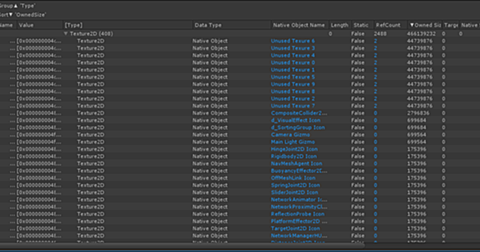


It's that simple, because you only need to configure the properties, export path, etc.
UNITY TEXTUREPACKER UPDATE
Update the atlas: Every time you need to update the atlas, the art will give you the picture, you update to the corresponding folder, open the TexturePacker, open the project, and export the atlas! It is easy to manage and maintain such a structure. tps, and each atlas may be composed of one or more folders. New atlas project: one project for each atlas, the project file extension is. (I strongly recommend to import pictures in the form of smart folders, because it is easy to manage, you don’t need to drag and drop the interface every time, just manage the pictures in the folder, and you can even manage the folders with external programs, such as svn, git Wait)

Drag the picture to the left margin to complete the operation of adding a single picture.There are currently two ways to import pictures: If the properties on the right side of the interface show that there are not as many as the previous example images, please click the button "Advanced settings" in the lower right corner. Open first and select the atlas format Data Format:
UNITY TEXTUREPACKER DOWNLOAD
This is free, or you can download the unitypackage in the mysterious blue link at the end of the article. You can directly open the Asset Store in Unity and search for "TexturePacker Importer" to download the latest one.
UNITY TEXTUREPACKER INSTALL
The installation of TexturePacker software will not be introduced, just install and replace the files!.Put TexturePacker's official website here:, please support genuine! Support genuine! Support genuine! After you download (po) and upload (jie), it is only for learning! Learn to use! Learn to use! Packing, management, loading and calling will be done in one go, so stay tuned!Ī mysterious blue link will be placed at the end of the article. Anyway, it is convenient, concise and easy to manage! Later, I will write an article about dynamically loading pictures in the atlas. What are the benefits of atlas packaging? Everyone should be very clear, reducing the number of system IOs, reducing the dc in the UI, etc. The most important thing is that the new version of TexturePacker supports recording the center point of the picture and the information of the nine-square grid! It can be said that I am happy, and I no longer need to be dominated by the weird zoom operation of version 3.0.9. This article uses TexturePacker 4.8.1 version to explain, the latest version as of June 2018 In view of the fact that many tutorials are staying in version 3.0.9, including my last tutorial, I deliberately produced the latest version.


 0 kommentar(er)
0 kommentar(er)
